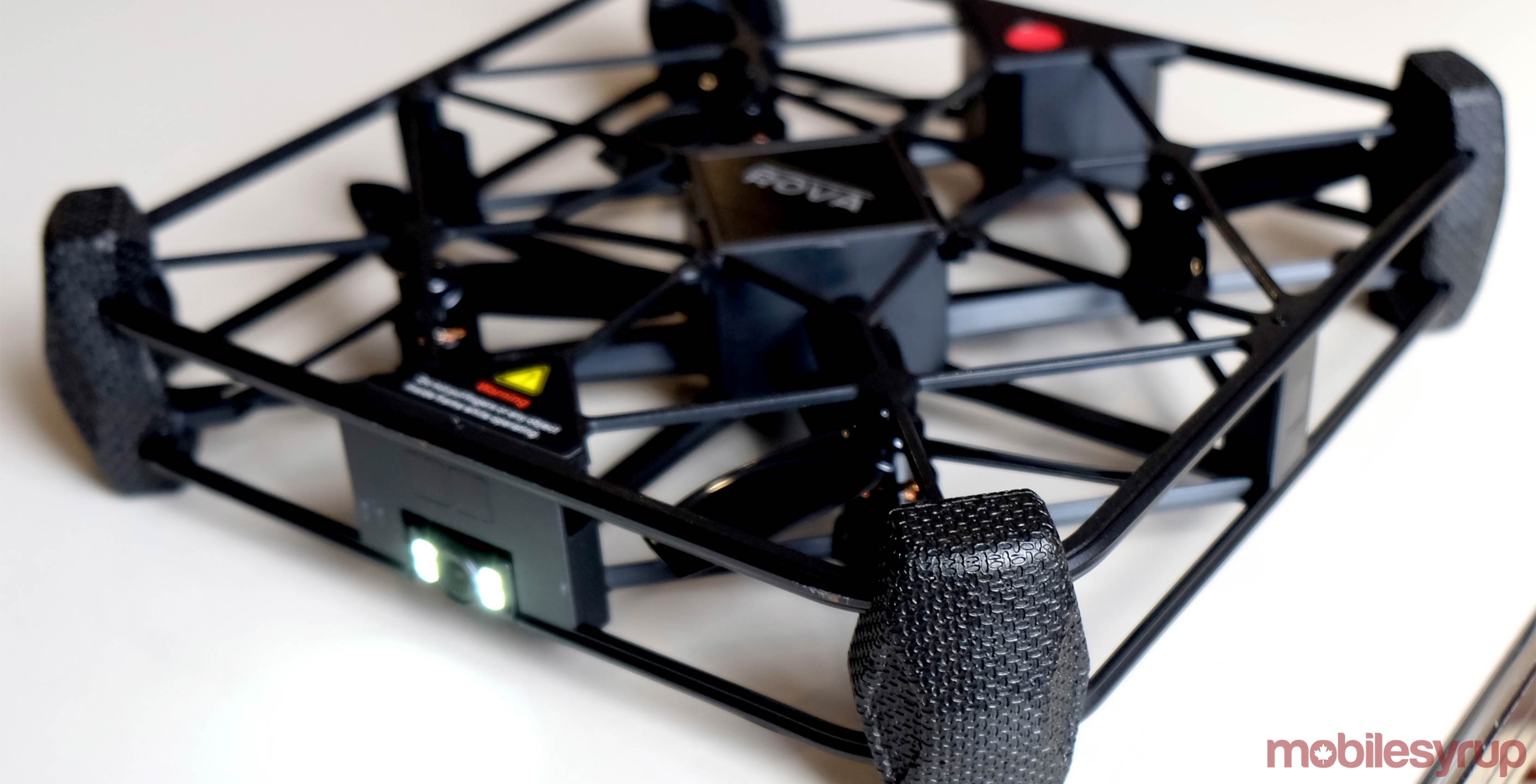
The Pros
- Small and compact build
- Decent image quality
The Cons
- Erratic flight in many conditions
- Short flight time for each battery
In the era of the selfie, is any angle truly out of reach? This is largely the premise behind IoT Group’s Rova, a drone devoted to capturing people in ways that would be otherwise difficult to pull off.
A selfie drone seems, at least to me, to be somewhat polarizing. Is one’s vanity such that slightly elevated aerial angles are so necessary? There’s a strong case for it on a vacation overlooking beautiful scenery, except this drone is designed to capture the moment in any setting. Anything to get rid of selfie sticks might be worthy too.
Unlike most consumer drones, Rova’s unit isn’t built for higher altitudes or longer distances. Plus, it’s smaller and lighter frame makes it easier to travel with. This combination makes the Rova less of a concern to fly with under Canada’s current draconian drone flight rules, since it is supposed to stay within tighter confines.
The idea makes sense because the various pieces are in place, but the real question is can it fly and capture good images at the same time?
Simple setup
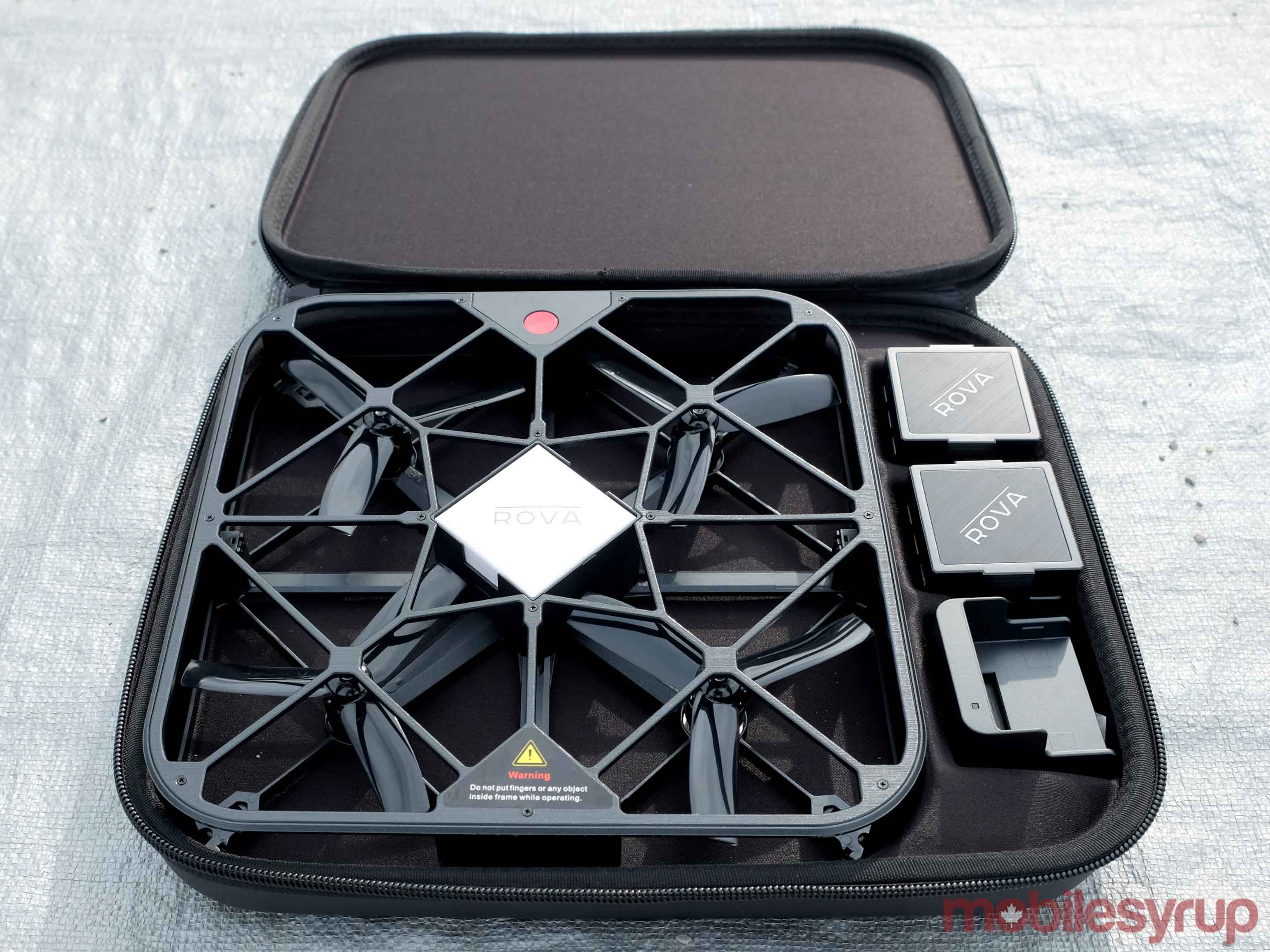
The Rova is a quadcopter with a surrounding frame to protect the propellers, making it distinctly different from regular quadcopters that don’t. The front-facing camera situated in the front has a 90-degree downward tilt, allowing the drone to capture shots straight ahead, straight down, or any angle in between.
There’s no motor operating the camera itself, so it can only be tilted manually. Another camera in the back, adjacent to the memory card slot and microUSB port is used to show the drone where it is relative to the ground. The front and sides also have sensors for obstacle avoidance.
IoT Group included a nice case neatly fitting the drone, batteries and charger. There’s even room for the foam bumpers that come in the box too. Another good move was throwing in a 16GB microSD card in there, negating the need to buy a card, though a larger size may be necessary if you want to shoot a lot of videos.
Two batteries are included, probably for the simple reason that each maxes out at eight minutes of flight time. Outside of charging the batteries fully prior to launch, there isn’t much to do, except learning the controls.
Taking flight
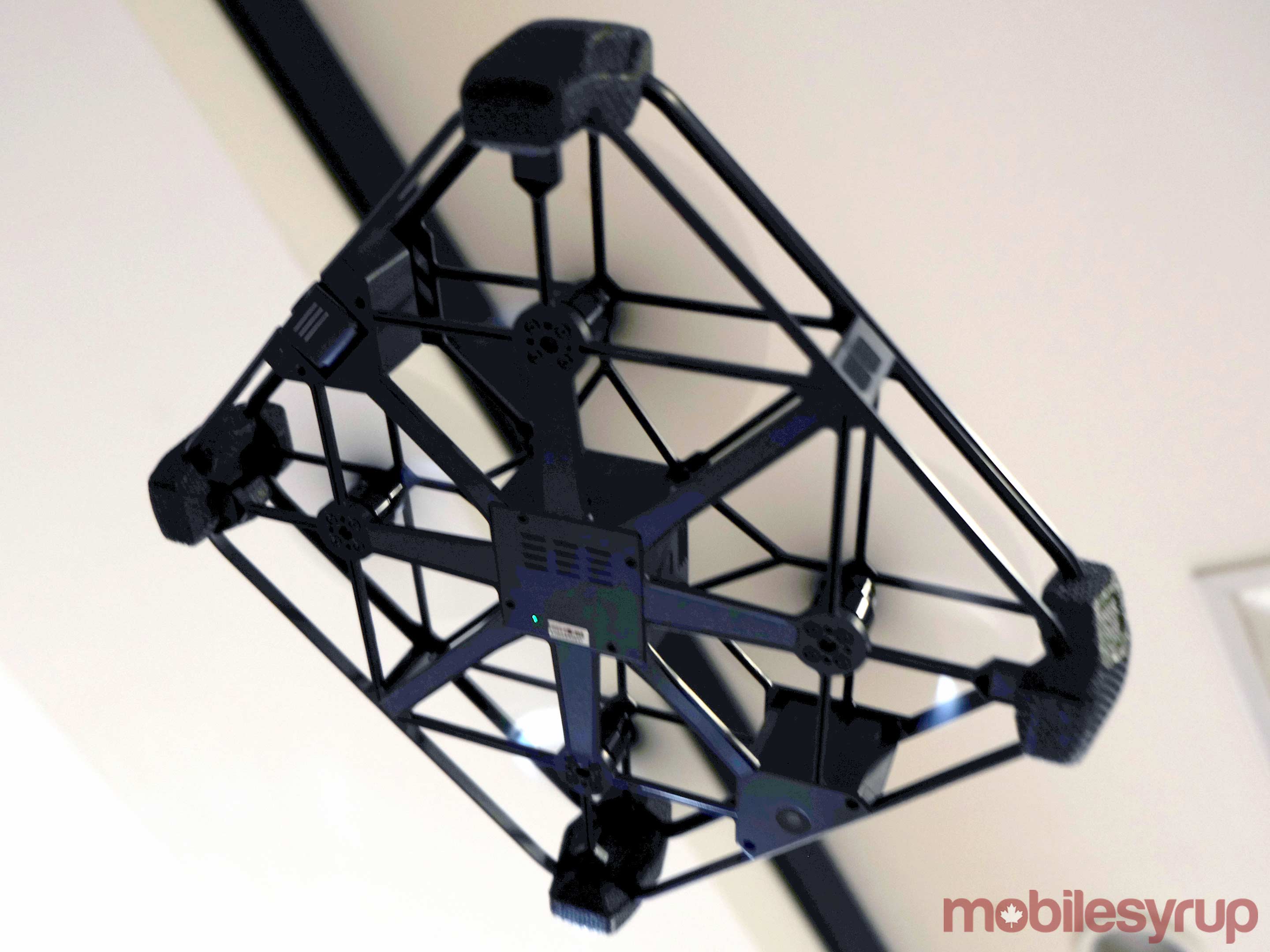
Getting ready to fly was straightforward, except the sequence had to be repeated more than once. The Rova works via a Wi-Fi Direct connection to the phone where the free Rova app (iOS or Android) turns the device into a controller.
The interface’s layout is nicely explained in a tutorial that is always available as a reference. The Wi-Fi connection in the phone’s settings visually indicate there is no connection, but that is in fact by design, as the ad hoc connection is in place once the Rova shows as “connected.”
The sequence that worked best was to turn the Rova on by sliding the battery on, laying it down on a flat surface, launching the Rova app, connecting via Wi-Fi, pressing the red button for two seconds until hearing a beep and then going from there. The interface suggested calibrating the onscreen joysticks by pulling them towards the record button at the bottom until the red button on the drone started flashing. Check, on all counts.
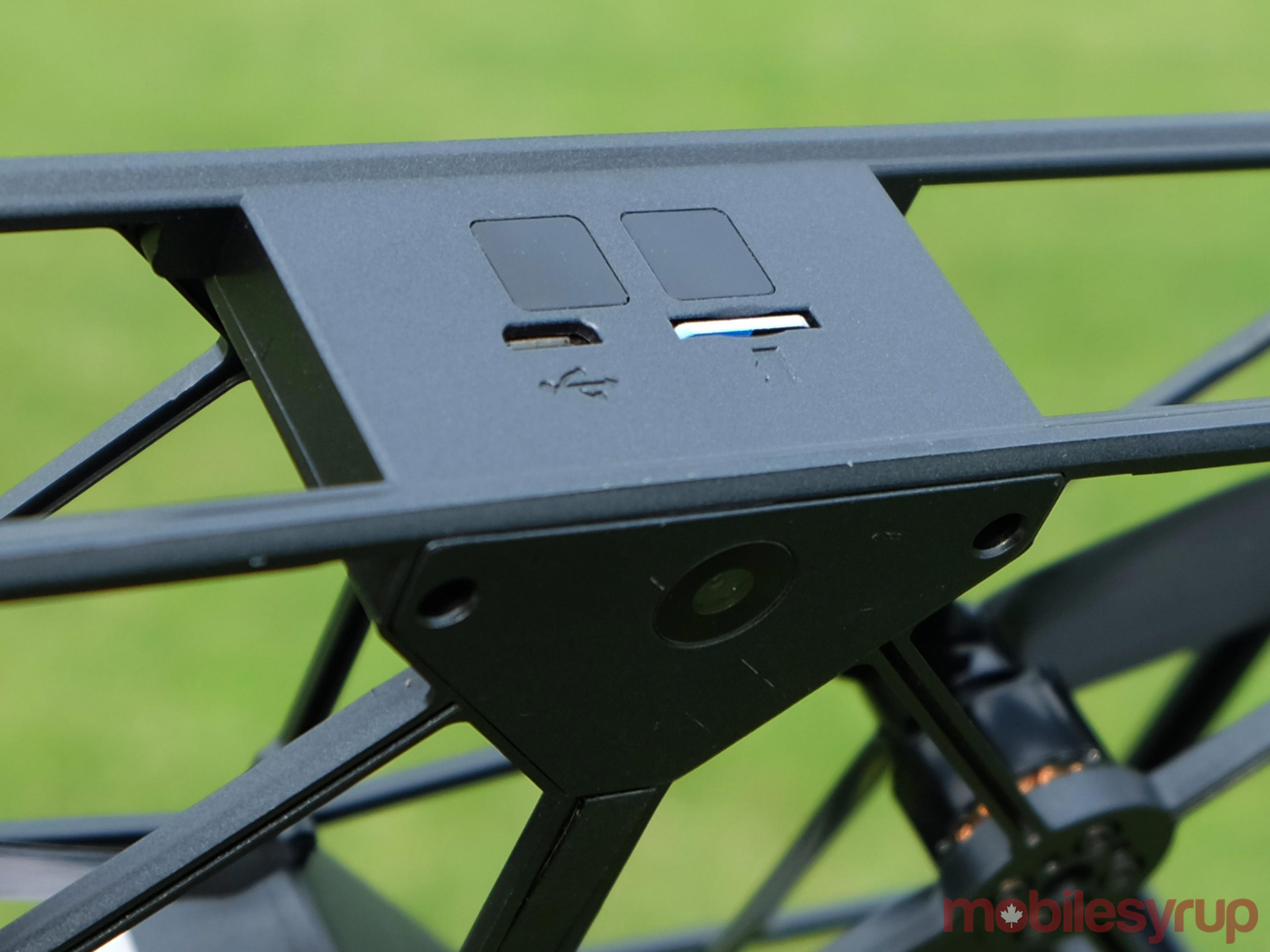
The Rova lacks GPS, and so, it needs constant guidance on where to go. That might explain why the drone veered in one direction after takeoff without me touching the joysticks. This happened repeatedly, making it difficult to establish any shot, much less a choreographed selfie.
IoT Group did note that rain and windy conditions are non-starters for the Rova, so I chalked off the first aborted flight to the gusts I was contending with. But even in milder conditions, the drone continued to veer anyway. I tried to time the moments after takeoff to pull the virtual joystick in the opposite direction to stabilize it in mid-flight, but that didn’t really work, either.
When the same thing happened indoors, albeit far less pronounced, something didn’t make sense. How could this be a selfie drone if it didn’t hover in place? There are two modes available: Selfie mode and Drone mode, with the only difference being controls are reversed, so that it moves left and right based on whether it’s facing you or not.
Putting in obstacle avoidance sensors helped dodge inevitable crashes, but the lack of stability didn’t make it feel elegant to me. The lighter frame may have something to do with the erratic flight. Or it’s simply a matter of the Rova not knowing that it’s off course because there’s nothing built-in to tell it otherwise.
The problem is compounded by the limited flight time. With only eight minutes max to work with on each battery, the time wasted in stabilizing the drone takes away from the very creativity it’s supposed to inspire.
Image quality
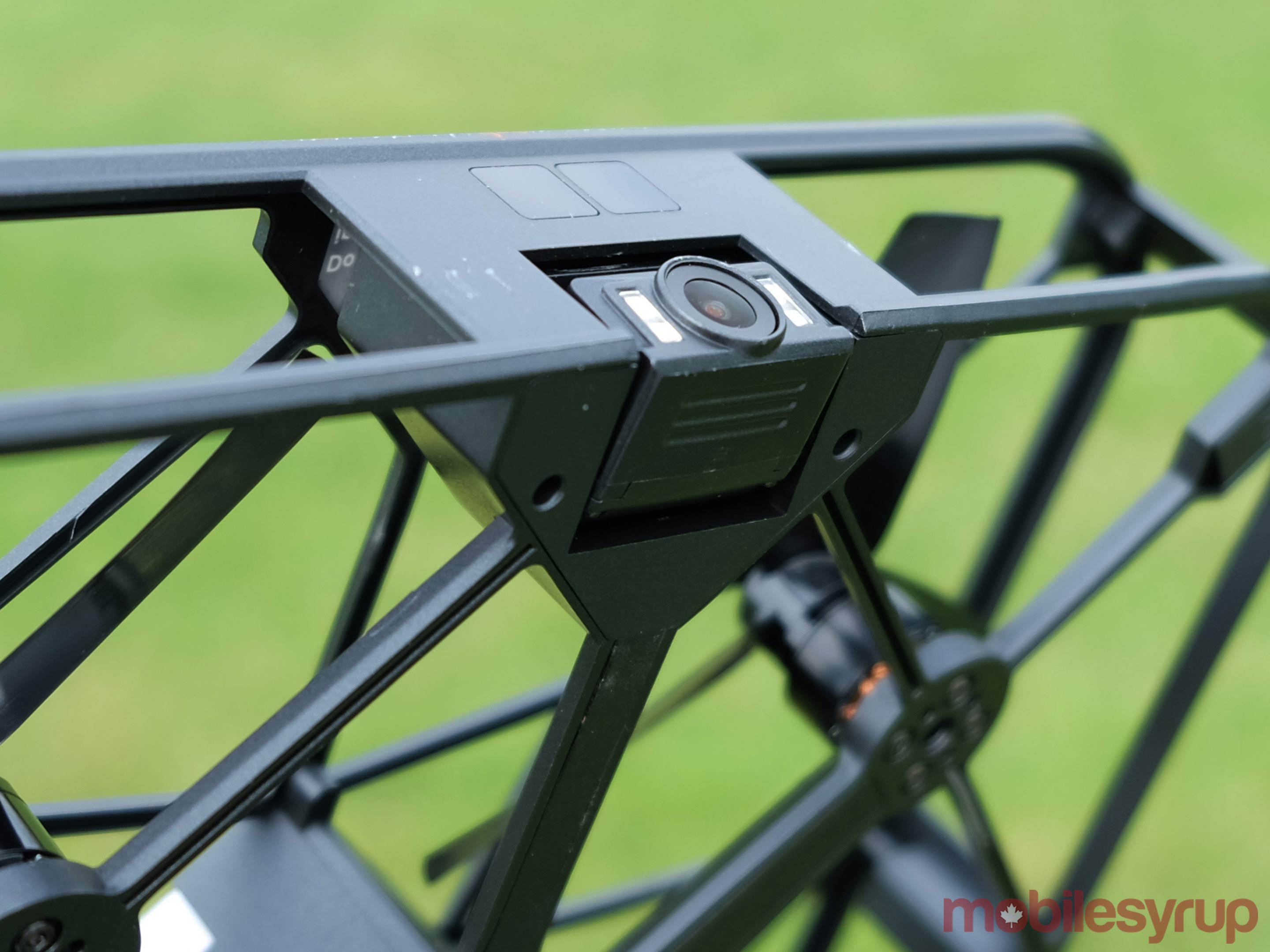
By default, the Rova records video in 1080p at 30fps, but can also do 1080p at 60fps or 720p at 120fps for slow-motion or fast action. Photos are 5-megapixel by default, but that can also be switched to 12-megapixel.
The live feed on the app is crisp and works well once the Rova is connected and ready to fly. Like most drones, the aperture isn’t especially wide, so night and low-light shots won’t turn out well. That leaves it as a straightforward situation where good lighting outside or inside is good enough to capture decent images.
Given this is a selfie drone, the lens focuses better in closer confines, but isn’t exactly designed for true close-ups. A distance of about five feet, or even 15 to 20-feet is a good baseline to stick with, assuming the Rova doesn’t stray. Having to manually tilt the lens is an annoyance that grows over time, especially since the drone sometimes refuses to take off again after landing unless you restart the app.
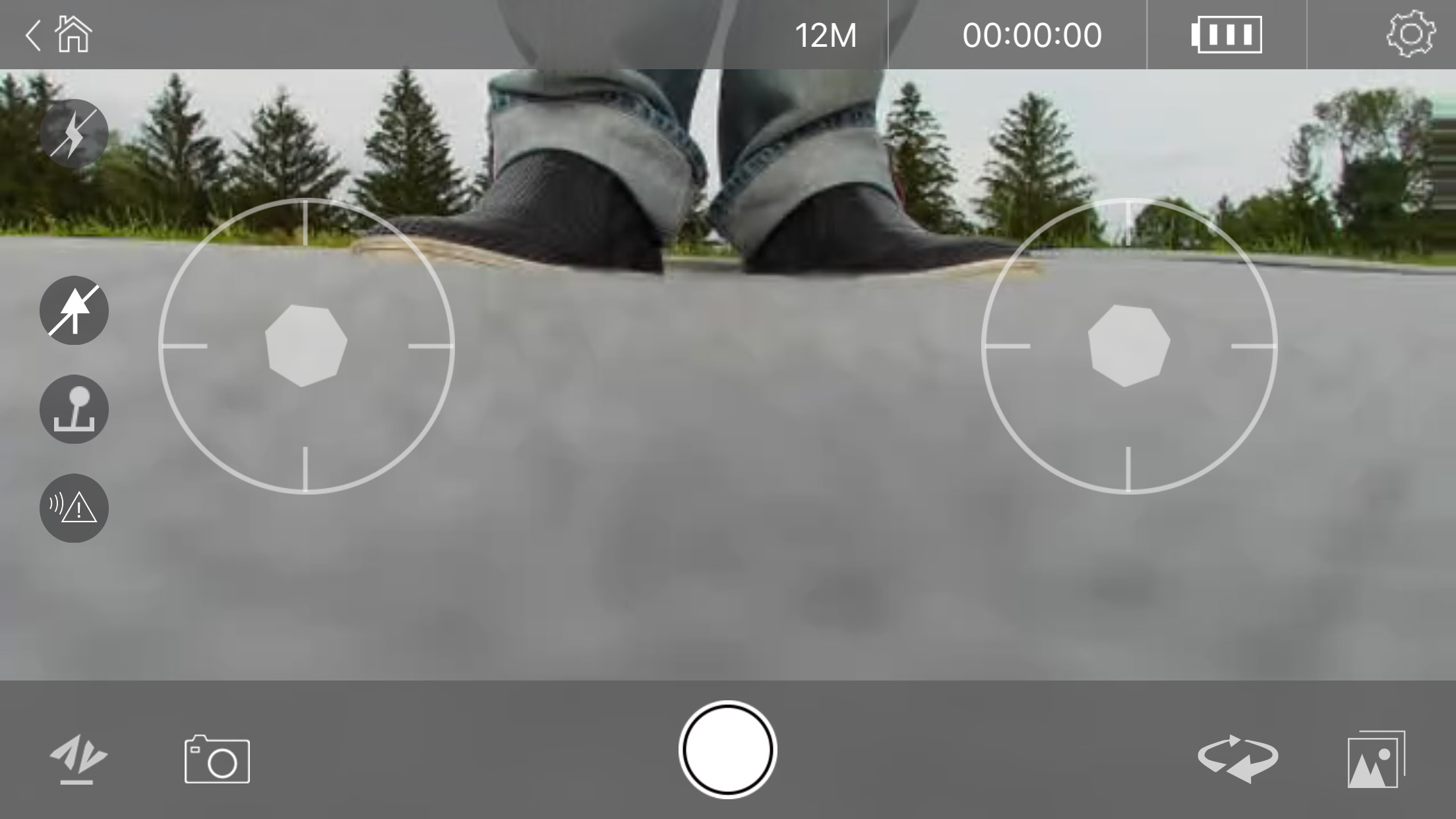
Image quality isn’t all that bad, though video turns out better than still images. Colours and details come in with some vibrancy, which is always nice when selfies are involved. The camera is also highly responsive to recording or photo-taking from the app, so that helps capture a moment a little faster.
The 360-degree imaging isn’t a case of two spherical images captured by two lenses stitched together, but rather the Rova spinning around and shooting images to create a full panoramic. It’s a slightly gimmicky way of doing it, but it’s there. The only challenge is having the drone stay in place long enough to do it fluidly.
An unstable situation
To me, a “selfie drone” implies a level of stability whereby the drone hovers more than it actually flies in any direction because its stated purpose is capturing images of people. The Rova has pieces in place to make this happen, but the most glaring omission is the flight stability required.
It’s nice that a drone like this can be used indoors (provided you put the bumpers on), allowing for cool selfies that way, except the unpredictable flight always adds heightened caution each time it takes off. I never felt truly relaxed flying the Rova, and that’s not how a selfie drone should be.
With DJI launching its Spark drone Spark drone for the same purpose, aerial selfies may have a new measuring stick to strive toward, assuming that drone lives up to the hype.
Then there’s the price. Sure, the Rova is $399.99 — considerably cheaper than the Spark — but getting what you pay for may very well be the case between these two.
"The Rova has pieces in place to make this happen, but the most glaring omission is the flight stability required." 5/10
MobileSyrup may earn a commission from purchases made via our links, which helps fund the journalism we provide free on our website. These links do not influence our editorial content. Support us here.


